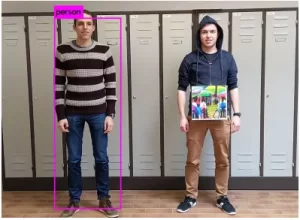Weaving Tomorrow: The Convergence of Textiles and Technology in Smart Fabric Innovations**
Textile Topher: Navigating the Realm of Smart Textiles**
Welcome, textile enthusiasts and tech aficionados! Today, we’re diving into a topic that marries the ancient art of textiles with the futuristic world of technology—smart textiles. These innovative fabrics are not just revolutionizing fashion but are also setting new benchmarks in various fields, from healthcare to sports and beyond. So grab your favorite cup of tea, cozy up, and let’s unravel the magic of smart textiles together!

What Are Smart Textiles?
Smart textiles, also known as e-textiles, are fabrics developed with new technologies that provide added value to traditional fabrics. Through the integration of conductive fibers, sensors, and microcontrollers, these textiles can interact with their environment and communicate data. Imagine a shirt that monitors your heart rate or a jacket that adjusts its temperature based on the outside weather—welcome to the future of fabrics!
A Glimpse into Technical Textiles
Before we delve deeper into how smart textiles are made, let’s take a moment to understand the broader category they fall under—technical textiles. Unlike conventional textiles used for aesthetic and comfort purposes, technical textiles are engineered for functionality. They serve various specialized purposes across different industries, including medical textiles, geotextiles, and protective textiles, to name a few.
The Science Behind Smart Textiles: Fiber and Fabric
Creating smart textiles is both an art and a science. The journey begins with the selection of the right fibers. Conductive fibers, which include materials like metallic fibers, conductive polymers, and carbon-based fibers, play a vital role in making textiles ‘smart.’ These fibers can conduct electricity and are incorporated into fabrics using various methods such as weaving, knitting, or embroidering.
Weaving Innovation: Embedding Technology
Embedding technology into textiles often comes down to innovative weaving techniques. One popular method is ‘e-weaving,’ where conductive fibers are interlaced with traditional fibers to create a fabric that can conduct electrical signals. For instance, think of a jacket that can control your smartphone’s music playlist via touch-sensitive sleeve cuffs—these functionalities are made possible with e-weaving.
Making Textiles Interactive: Sensors and Actuators
The heart of smart textiles lies in their ability to sense and react to stimuli. This is where sensors and actuators come into play. Sensors embedded in textiles can detect changes in the environment, whether it’s temperature, pressure, or humidity. These sensors are often connected to microcontrollers that process the collected data and activate actuators to trigger responses. For example, pressure sensors in athletic shoes can provide real-time feedback to athletes about their performance, enhancing training efficiency.
Powering Smart Textiles: The Energy Challenge
Of course, all these incredible functionalities require power. One of the significant challenges in the development of smart textiles is finding efficient and durable power sources. Various solutions are being explored, such as integrating thin film batteries, energy harvesting technologies like solar fabrics, or even using the wearer’s body movements to generate power.
Smart Textiles in Action: Real-World Applications
Smart textiles are not just a futuristic concept; they are making tangible impacts in various sectors:
Healthcare:** Imagine a hospital gown that continuously monitors vital signs and alerts healthcare providers to any abnormalities in real-time. Smart textiles can offer non-invasive, continuous monitoring which is especially beneficial for chronic conditions.
Sports and Fitness:** From fitness trackers embedded in clothing to advanced compression garments that enhance blood flow, smart textiles are revolutionizing how athletes train and perform.
Fashion and Entertainment:** LEDs and color-changing fabrics are enabling designers to create clothing that doubles as a work of art, transforming fashion shows into interactive experiences.
Military and Defense:** Smart uniforms with embedded sensors can monitor a soldier’s physiological status, ensure optimal performance, and even detect environmental hazards like toxic gases.
Challenges and the Road Ahead
While the potential of smart textiles is immense, there are challenges to overcome. Durability and washability are significant concerns, as electronic components need to withstand everyday wear and tear. Moreover, the integration of technology should not compromise the comfort and flexibility of the fabric.
Nevertheless, research and innovation in this field continue to accelerate. Advances in nanotechnology and flexible electronics are paving the way for new possibilities. Moreover, interdisciplinary collaboration between textile engineers, material scientists, and designers is crucial for driving this industry forward.
The Green Side of Smart Textiles
In our quest for technological advancements, it’s essential to remain conscious of sustainability. The production of textiles, particularly smart textiles, must consider environmental impacts. Researchers are exploring eco-friendly materials and recycling methods for electronic textiles to ensure that innovation does not come at the cost of our planet.
Conclusion: A Textiles Revolution
As we weave through the intricate tapestry of smart textiles, it’s clear that we are on the brink of a revolution. The blending of technology with textiles opens up a world of possibilities, enhancing our daily lives in ways we could have only imagined. Whether it’s healthcare, sports, fashion, or defense, smart textiles hold the promise of a smarter, more connected future.
So, next time you pull on your favorite sweater, imagine the infinite potential lying within those threads. Who knows, you might just be wearing the next groundbreaking innovation in smart textiles. Stay curious, stay connected, and keep exploring the fascinating world of textiles.
Until next time, happy weaving! 🌟
Keywords: Smart Textiles, Conductive Fibers, Sensors, (Post number: 136), Applications, Power Sources





